-
 Bitcoin
Bitcoin $117500
1.74% -
 Ethereum
Ethereum $3742
2.76% -
 XRP
XRP $3.165
2.67% -
 Tether USDt
Tether USDt $1.000
0.01% -
 BNB
BNB $782.7
2.62% -
 Solana
Solana $186.2
4.21% -
 USDC
USDC $0.9999
0.00% -
 Dogecoin
Dogecoin $0.2375
4.33% -
 TRON
TRON $0.3184
0.92% -
 Cardano
Cardano $0.8208
2.70% -
 Hyperliquid
Hyperliquid $44.48
4.74% -
 Sui
Sui $4.003
9.41% -
 Stellar
Stellar $0.4419
5.99% -
 Chainlink
Chainlink $18.26
4.02% -
 Hedera
Hedera $0.2658
11.93% -
 Bitcoin Cash
Bitcoin Cash $556.3
5.98% -
 Avalanche
Avalanche $24.12
4.02% -
 Litecoin
Litecoin $113.2
1.43% -
 UNUS SED LEO
UNUS SED LEO $8.979
0.15% -
 Shiba Inu
Shiba Inu $0.00001406
5.12% -
 Toncoin
Toncoin $3.324
7.01% -
 Ethena USDe
Ethena USDe $1.001
0.01% -
 Uniswap
Uniswap $10.44
3.81% -
 Polkadot
Polkadot $4.098
3.95% -
 Monero
Monero $325.4
-0.61% -
 Dai
Dai $1.000
0.01% -
 Bitget Token
Bitget Token $4.555
2.84% -
 Pepe
Pepe $0.00001255
4.00% -
 Aave
Aave $297.5
3.63% -
 Cronos
Cronos $0.1327
3.29%
How to measure scarcity of NFT? How to view data?
NFT scarcity, influenced by total supply, rarity, and burn rate, can be measured using tools like Rarity.tools and blockchain explorers like Etherscan.
May 16, 2025 at 08:22 am

The scarcity of NFTs (Non-Fungible Tokens) is a critical factor that influences their value and desirability. Understanding how to measure this scarcity and view relevant data can provide valuable insights for collectors, investors, and enthusiasts. In this article, we will explore the various methods and tools used to assess NFT scarcity, as well as how to access and interpret the data associated with these digital assets.
Understanding NFT Scarcity
Scarcity is a fundamental concept in economics that also applies to NFTs. In the context of NFTs, scarcity refers to the limited supply of a particular digital asset, which can enhance its value and desirability. The more scarce an NFT is, the more valuable it is likely to be, assuming there is demand for it.
Several factors contribute to the scarcity of an NFT:
- Total Supply: The total number of NFTs in a collection or series.
- Rarity: The uniqueness of an NFT within its collection, often determined by unique attributes or traits.
- Burn Rate: The rate at which NFTs are being destroyed or removed from circulation.
- Minting Conditions: The conditions under which new NFTs can be created, if at all.
Measuring NFT Scarcity
To measure the scarcity of an NFT, one can use various metrics and tools. Here are some common methods:
Total Supply
Total supply is the simplest measure of scarcity. It is the total number of NFTs in a collection. For example, if a collection has only 100 NFTs, it is considered more scarce than a collection with 10,000 NFTs.
To find the total supply of an NFT collection, you can:
- Visit the official website of the NFT project.
- Check the project's smart contract on a blockchain explorer like Etherscan.
- Use NFT marketplaces like OpenSea or Rarible, which often display the total supply of a collection.
Rarity Scores
Rarity scores are more complex metrics that consider the uniqueness of an NFT's attributes. Many NFT collections have multiple traits or features that can vary, and the rarer the combination of these traits, the higher the rarity score.
To calculate rarity scores, you can use tools like:
- Rarity.tools: This platform allows you to enter the token ID of an NFT and receive a rarity score based on its attributes.
- NFT Rarity: Another tool that provides detailed rarity scores for various NFT collections.
To view rarity scores on Rarity.tools:
- Go to the Rarity.tools website.
- Enter the token ID of the NFT you want to check.
- The tool will display the rarity score and break down the attributes contributing to it.
Burn Rate
Burn rate refers to the rate at which NFTs are being destroyed or removed from circulation. A higher burn rate can increase the scarcity of the remaining NFTs.
To track the burn rate of an NFT collection:
- Use a blockchain explorer like Etherscan to monitor transactions involving the burning of NFTs.
- Check the project's official channels for announcements about burning events or mechanisms.
Viewing NFT Data
Accessing and interpreting data related to NFTs is crucial for understanding their scarcity and value. Here are some ways to view NFT data:
Blockchain Explorers
Blockchain explorers like Etherscan provide detailed information about transactions and smart contracts on the Ethereum blockchain, which is where many NFTs are hosted.
To view NFT data on Etherscan:
- Go to the Etherscan website.
- Enter the smart contract address of the NFT collection you are interested in.
- Navigate to the "Contract" tab to see the total supply and other relevant data.
- Use the "Transactions" tab to track transfers and burns of NFTs.
NFT Marketplaces
NFT marketplaces like OpenSea and Rarible offer comprehensive data on NFT collections, including total supply, current listings, and recent sales.
To view NFT data on OpenSea:
- Go to the OpenSea website.
- Search for the NFT collection you are interested in.
- Click on the collection to see the total supply, floor price, and other statistics.
- Use the "Activity" tab to view recent sales and transfers.
Third-Party Analytics Platforms
Third-party analytics platforms like CryptoSlam and NonFungible provide in-depth data and insights into the NFT market.
To use CryptoSlam for NFT data:
- Go to the CryptoSlam website.
- Navigate to the "NFTs" section.
- Search for the NFT collection you want to analyze.
- View data on total sales volume, average sale price, and other metrics.
Interpreting NFT Data
Interpreting NFT data requires an understanding of the various metrics and how they relate to scarcity and value. Here are some key points to consider:
Total Supply and Rarity
Total supply and rarity are directly related to scarcity. A lower total supply and higher rarity score indicate greater scarcity, which can drive up the value of an NFT.
Burn Rate and Market Dynamics
Burn rate can influence the scarcity of an NFT over time. A high burn rate can lead to increased scarcity, potentially increasing the value of the remaining NFTs. However, market dynamics such as demand and investor sentiment also play a significant role.
Sales Data and Market Trends
Sales data from NFT marketplaces and analytics platforms can provide insights into market trends and the demand for specific NFTs. High sales volumes and increasing average sale prices can indicate growing interest and value.
Frequently Asked Questions
Q: Can the scarcity of an NFT change over time?
A: Yes, the scarcity of an NFT can change over time due to factors like burning, new minting, and changes in market demand. Monitoring these factors can help you understand how the scarcity of an NFT may evolve.
Q: Are there any tools that provide real-time data on NFT scarcity?
A: While most tools provide data that is updated periodically, some platforms like CryptoSlam offer real-time data on NFT sales and market trends, which can indirectly indicate changes in scarcity.
Q: How can I verify the authenticity of an NFT's scarcity data?
A: To verify the authenticity of an NFT's scarcity data, you can cross-reference information from multiple sources, such as the project's official website, blockchain explorers, and reputable NFT marketplaces. Additionally, engaging with the community and following official project announcements can provide further validation.
Q: Does the platform on which an NFT is hosted affect its scarcity?
A: The platform on which an NFT is hosted can influence its perceived scarcity and value due to factors like user base, liquidity, and market dynamics. However, the intrinsic scarcity of an NFT, determined by its total supply and rarity, remains the same regardless of the platform.
Disclaimer:info@kdj.com
The information provided is not trading advice. kdj.com does not assume any responsibility for any investments made based on the information provided in this article. Cryptocurrencies are highly volatile and it is highly recommended that you invest with caution after thorough research!
If you believe that the content used on this website infringes your copyright, please contact us immediately (info@kdj.com) and we will delete it promptly.
- UAE's Digital Asset Revolution: Stablecoin Regulations Take Center Stage
- 2025-07-26 10:40:11
- VIRTUAL Weekly Drop: Recovery Analysis and Privacy Push
- 2025-07-26 08:50:11
- Bitcoin, Cynthia Lummis, and Freedom Money: A New Yorker's Take
- 2025-07-26 08:30:11
- Pudgy Penguins, Crypto Prices, and the Altseason Buzz: What's the Hype?
- 2025-07-26 10:51:48
- Crypto Gainers, Top 10, Week 30: Altcoins Buck the Trend
- 2025-07-26 08:55:12
- Solana, Altcoins, and Coinbase: What's the Buzz?
- 2025-07-26 06:30:12
Related knowledge
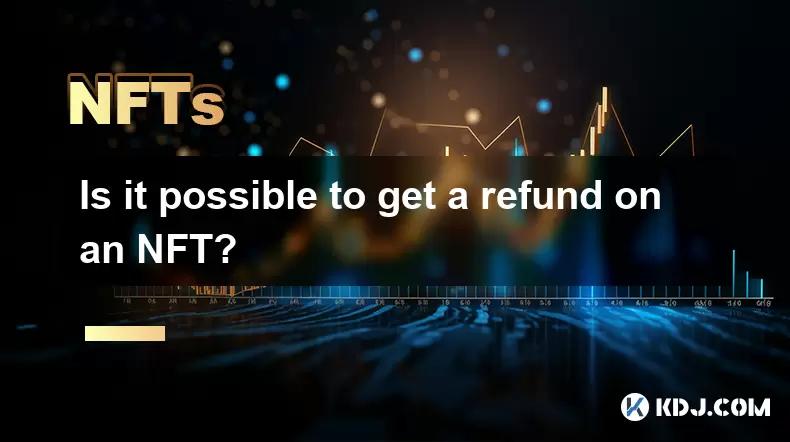
Is it possible to get a refund on an NFT?
Jul 21,2025 at 08:35pm
Understanding NFT Transactions and RefundsWhen you purchase an NFT (Non-Fungible Token), the transaction is typically recorded on a blockchain, making...
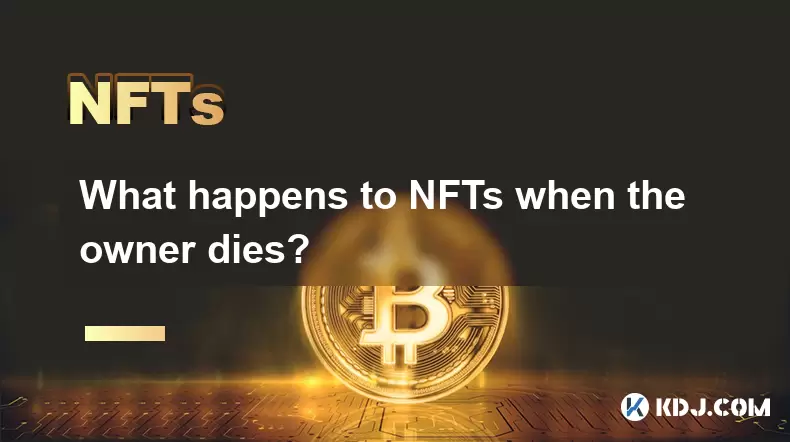
What happens to NFTs when the owner dies?
Jul 22,2025 at 02:43pm
Legal Ownership and Digital AssetsWhen an individual owns NFTs, the question of what happens to these assets upon their death is a pressing one. NFTs ...
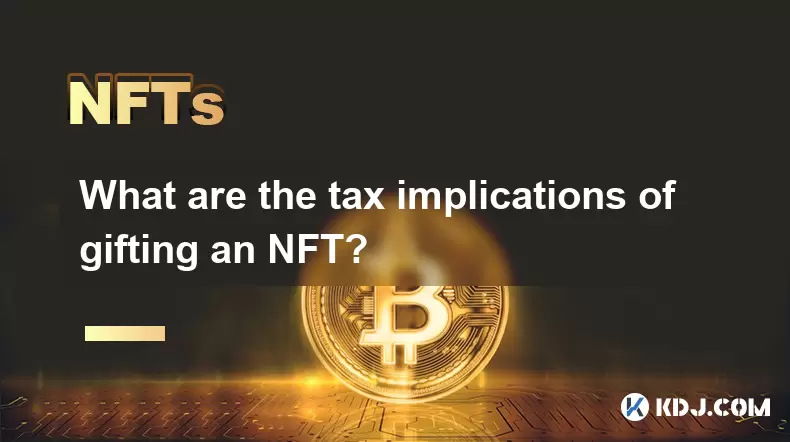
What are the tax implications of gifting an NFT?
Jul 19,2025 at 04:21am
Understanding the Basics of NFT GiftingGifting a Non-Fungible Token (NFT) involves transferring ownership from one individual to another without recei...
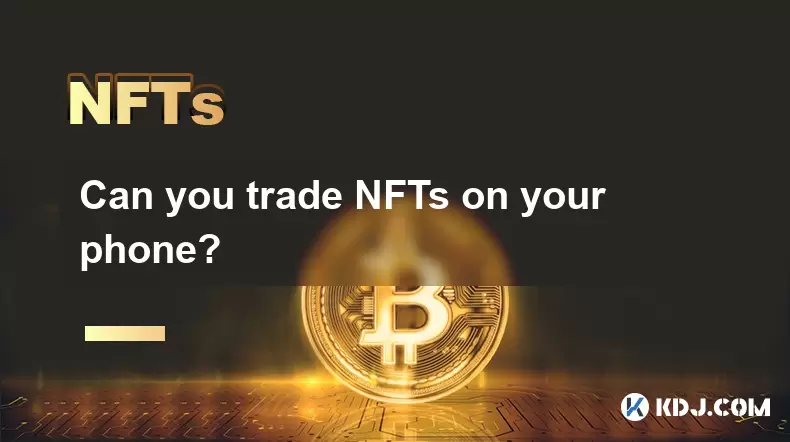
Can you trade NFTs on your phone?
Jul 18,2025 at 04:29am
Trading NFTs on Mobile DevicesYes, you can trade NFTs on your phone, and the process has become increasingly streamlined thanks to a variety of mobile...
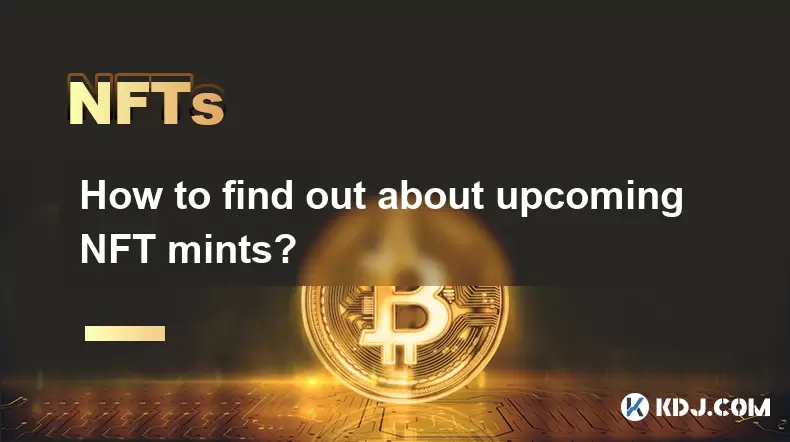
How to find out about upcoming NFT mints?
Jul 18,2025 at 11:50am
Exploring NFT Minting OpportunitiesUnderstanding the landscape of upcoming NFT mints is crucial for collectors, investors, and creators who wish to st...
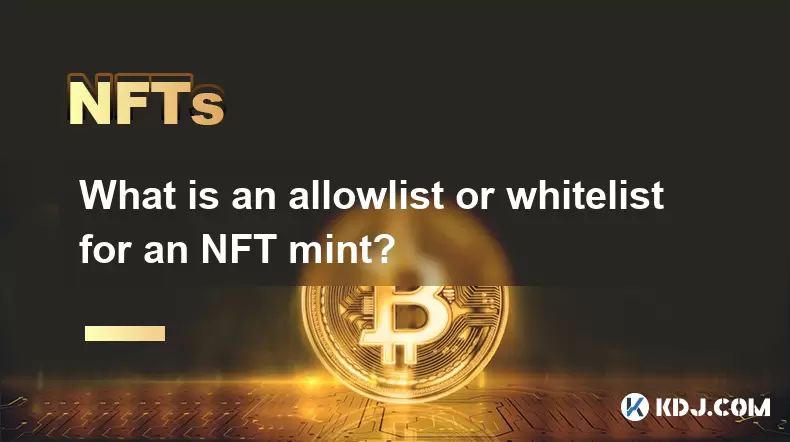
What is an allowlist or whitelist for an NFT mint?
Jul 20,2025 at 07:14pm
Understanding the Concept of an Allowlist for NFT MintingAn allowlist, also commonly referred to as a whitelist, is a mechanism used in the NFT mintin...

Is it possible to get a refund on an NFT?
Jul 21,2025 at 08:35pm
Understanding NFT Transactions and RefundsWhen you purchase an NFT (Non-Fungible Token), the transaction is typically recorded on a blockchain, making...

What happens to NFTs when the owner dies?
Jul 22,2025 at 02:43pm
Legal Ownership and Digital AssetsWhen an individual owns NFTs, the question of what happens to these assets upon their death is a pressing one. NFTs ...

What are the tax implications of gifting an NFT?
Jul 19,2025 at 04:21am
Understanding the Basics of NFT GiftingGifting a Non-Fungible Token (NFT) involves transferring ownership from one individual to another without recei...

Can you trade NFTs on your phone?
Jul 18,2025 at 04:29am
Trading NFTs on Mobile DevicesYes, you can trade NFTs on your phone, and the process has become increasingly streamlined thanks to a variety of mobile...

How to find out about upcoming NFT mints?
Jul 18,2025 at 11:50am
Exploring NFT Minting OpportunitiesUnderstanding the landscape of upcoming NFT mints is crucial for collectors, investors, and creators who wish to st...

What is an allowlist or whitelist for an NFT mint?
Jul 20,2025 at 07:14pm
Understanding the Concept of an Allowlist for NFT MintingAn allowlist, also commonly referred to as a whitelist, is a mechanism used in the NFT mintin...
See all articles

























































































